Medical transcription plays a vital role in healthcare, but it comes with significant responsibilities. HIPAA confidentiality regulations that apply to medical transcription are essential for protecting patient privacy and maintaining trust in the healthcare system.
At ScriberJoy, we understand the critical importance of these regulations and their impact on medical transcriptionists’ daily work. This post will guide you through the key HIPAA rules and best practices to ensure compliance in medical transcription.
Understanding HIPAA and Its Significance in Medical Transcription
The Essence of HIPAA
The Health Insurance Portability and Accountability Act (HIPAA), enacted in 1996, serves as the cornerstone of patient privacy protection in the United States. This federal law establishes a comprehensive framework that shapes every aspect of medical transcription work. HIPAA consists of five main components: National Provider Identifier Standard, Transactions and Code Sets Standard, HIPAA Privacy Rule, HIPAA Security Rule, and the HIPAA Enforcement Rule.
HIPAA’s Core Components for Medical Transcriptionists
At the heart of HIPAA lies the protection of Protected Health Information (PHI). This encompasses all data that could identify a patient, including names, addresses, medical records, and lab results. Medical transcriptionists must treat every piece of information they handle with the utmost confidentiality.
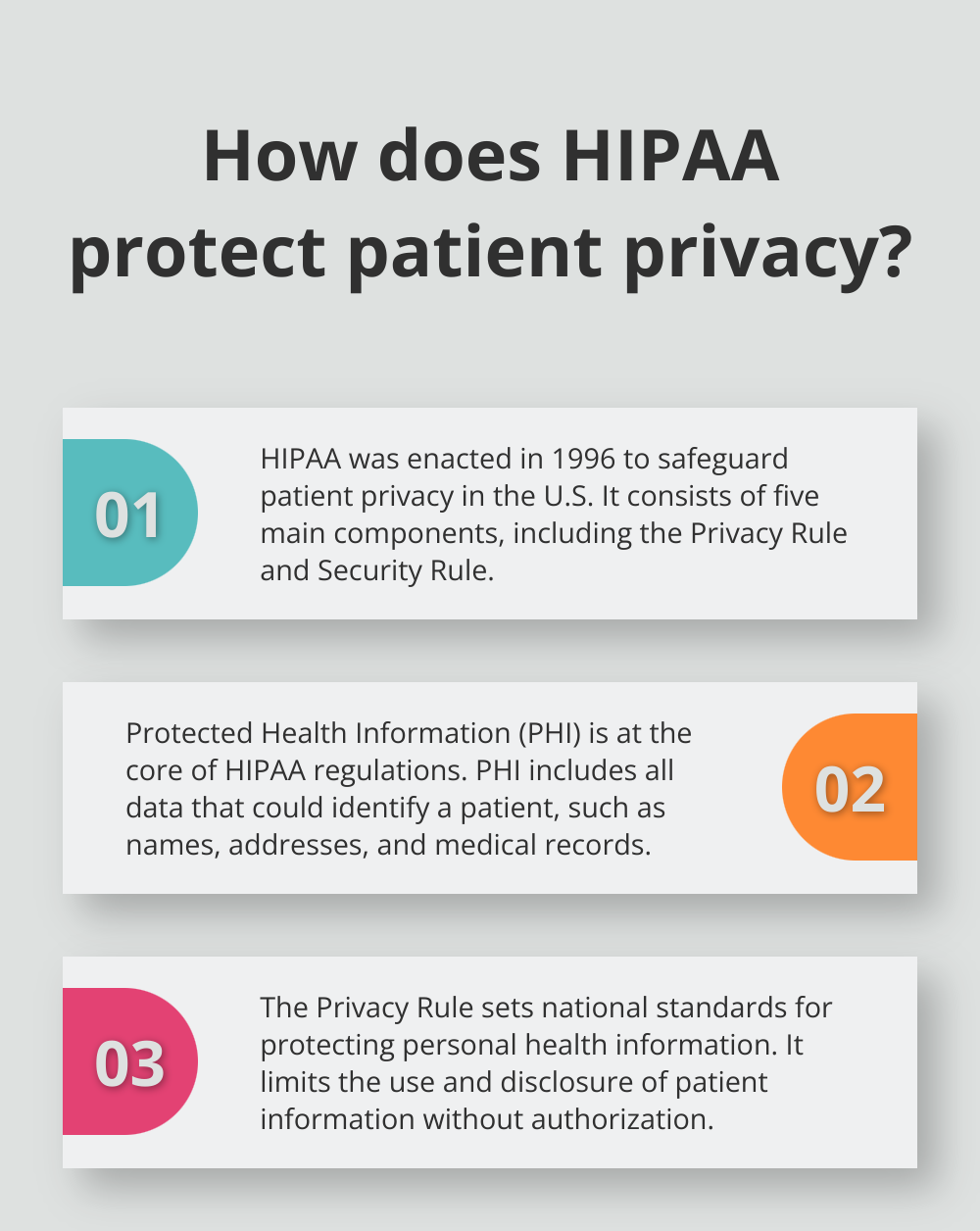
The Privacy Rule, a key component of HIPAA, sets national standards for safeguarding personal health information. It mandates appropriate measures to protect patient privacy and imposes limits on the use and disclosure of such information without patient authorization.
The Security Rule and Its Impact on Transcription Practices
HIPAA’s Security Rule focuses specifically on protecting electronic PHI (ePHI). This rule holds particular relevance in today’s digital landscape, where most medical transcription occurs electronically. It requires the implementation of administrative, physical, and technical safeguards to ensure the confidentiality, integrity, and security of ePHI.
For medical transcriptionists, this translates to:
- Using secure, encrypted platforms for transcription work
- Implementing robust password policies
- Ensuring all work devices are protected against unauthorized access
The High Stakes of Non-Compliance
HIPAA violations carry severe consequences. Healthcare providers face potential fines for violations. These financial penalties can devastate smaller practices and significantly impact larger organizations.
Beyond monetary repercussions, HIPAA violations can lead to:
- Criminal charges
- Loss of medical licenses
- Irreparable damage to a healthcare provider’s reputation
The Role of Transcriptionists in Maintaining Trust
Medical transcriptionists play a pivotal role in upholding HIPAA regulations. Their adherence to these rules not only helps avoid penalties but also maintains the trust that forms the foundation of effective healthcare. By prioritizing HIPAA compliance, transcriptionists contribute significantly to protecting patient privacy and supporting the integrity of the healthcare system.
As we move forward, it’s essential to explore the specific HIPAA confidentiality rules that medical transcriptionists must follow to ensure full compliance and maintain the highest standards of patient privacy protection.
How to Safeguard Patient Information in Medical Transcription
Medical transcriptionists handle sensitive patient data daily, making HIPAA compliance essential. This chapter explores practical steps to protect patient information throughout the transcription process.
Secure Data Handling and Storage
Protection of patient information starts with secure handling and storage practices. Medical transcriptionists should use dedicated, password-protected devices for their work. Public Wi-Fi networks must be avoided when accessing patient data. Instead, a secure, encrypted connection should be used.
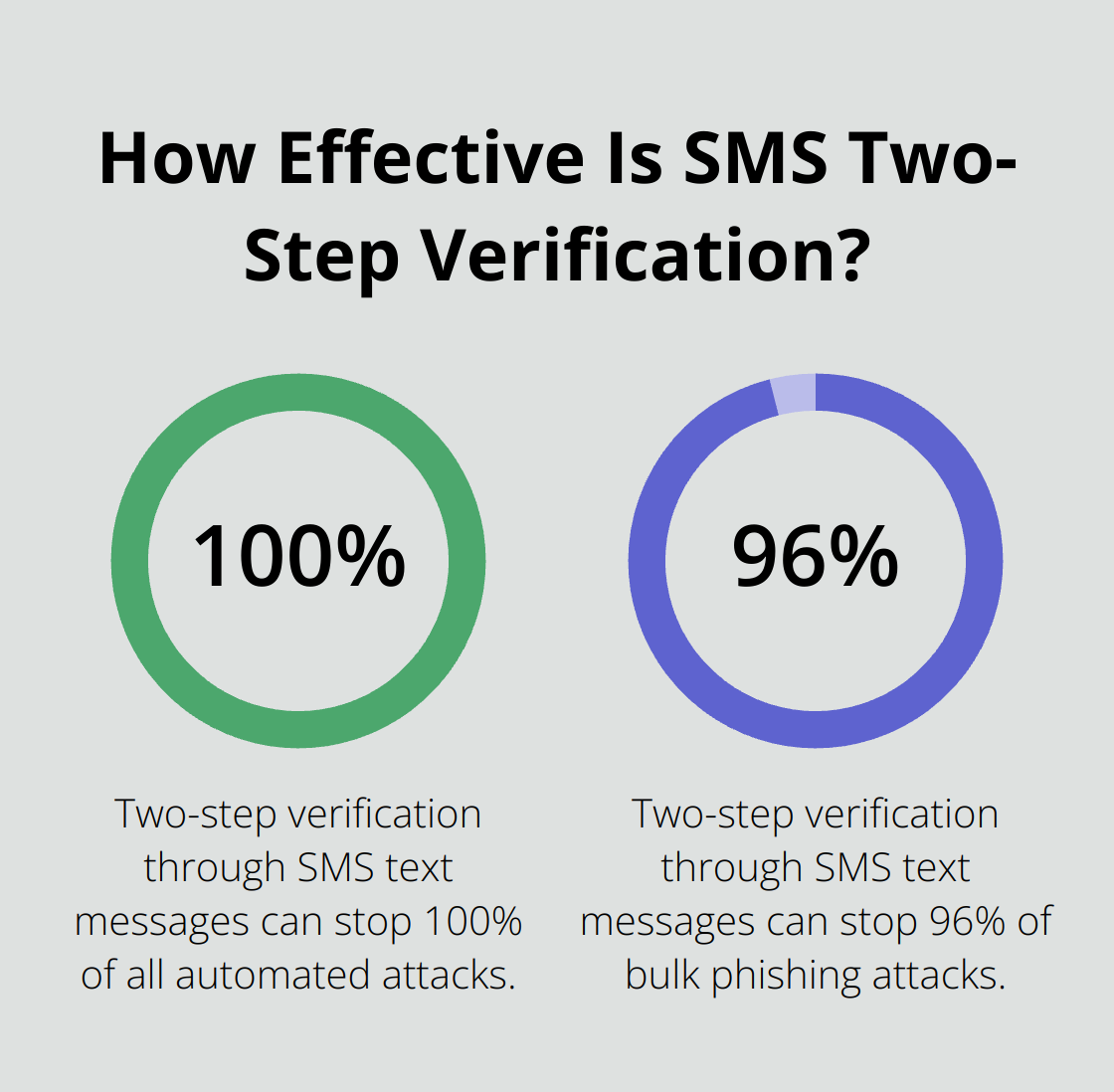
All patient information should be stored on HIPAA-compliant cloud storage solutions. These services offer advanced encryption and access controls. Local storage should be limited and encrypted. The U.S. Department of Health and Human Services recommends AES 256-bit encryption for stored data.
Proper Data Disposal
Proper disposal of confidential data is often overlooked but critical for HIPAA compliance. Digital files should be securely erased using specialized software that overwrites data multiple times. The U.S. Department of Defense standard (DoD 5220.22-M) recommends at least three overwrites.
For physical documents, cross-cut shredders that produce confetti-like pieces should be used. Some healthcare facilities even use NAID AAA Certified destruction services for added security.
Access Control Measures
Strict access control measures prevent unauthorized access to patient information. Strong, unique passwords should be used for all accounts and changed regularly. The National Institute of Standards and Technology (NIST) recommends passphrases of at least 14 characters.
Two-factor authentication (2FA) should be enabled wherever possible. According to Google, two-step verification through SMS text messages can stop 100% of all automated attacks, 96% of bulk phishing attacks and adds an extra layer of security, reducing the risk of unauthorized access even if passwords are compromised.
Data Transmission Security
When transmitting patient data, encryption is non-negotiable. End-to-end encryption should be used for all data transfers. HIPAA encryption requirements recommend that covered entities and business associates utilize end-to-end encryption (E2EE). This ensures that data remains unreadable even if intercepted during transmission.
For email communication, HIPAA-compliant email services that offer encryption should be used. Sensitive information should never be sent via standard email or messaging apps.
VPNs (Virtual Private Networks) add an extra layer of security when working remotely. They encrypt internet connections, protecting data in transit from potential eavesdroppers.
These security measures significantly reduce the risk of HIPAA violations and maintain high standards of patient confidentiality. Protecting patient privacy is not just a legal requirement-it’s a fundamental aspect of providing quality healthcare.
The next chapter will explore best practices for HIPAA compliance in medical transcription, including staff training, security policies, and risk assessments.
How to Implement HIPAA Best Practices in Medical Transcription
Prioritize Ongoing HIPAA Training
HIPAA training is required to be conducted annually. However, this is not a mandatory legal requirement, but rather a healthcare industry-approved best practice. Quarterly refresher courses keep HIPAA compliance at the forefront of your team’s mind.
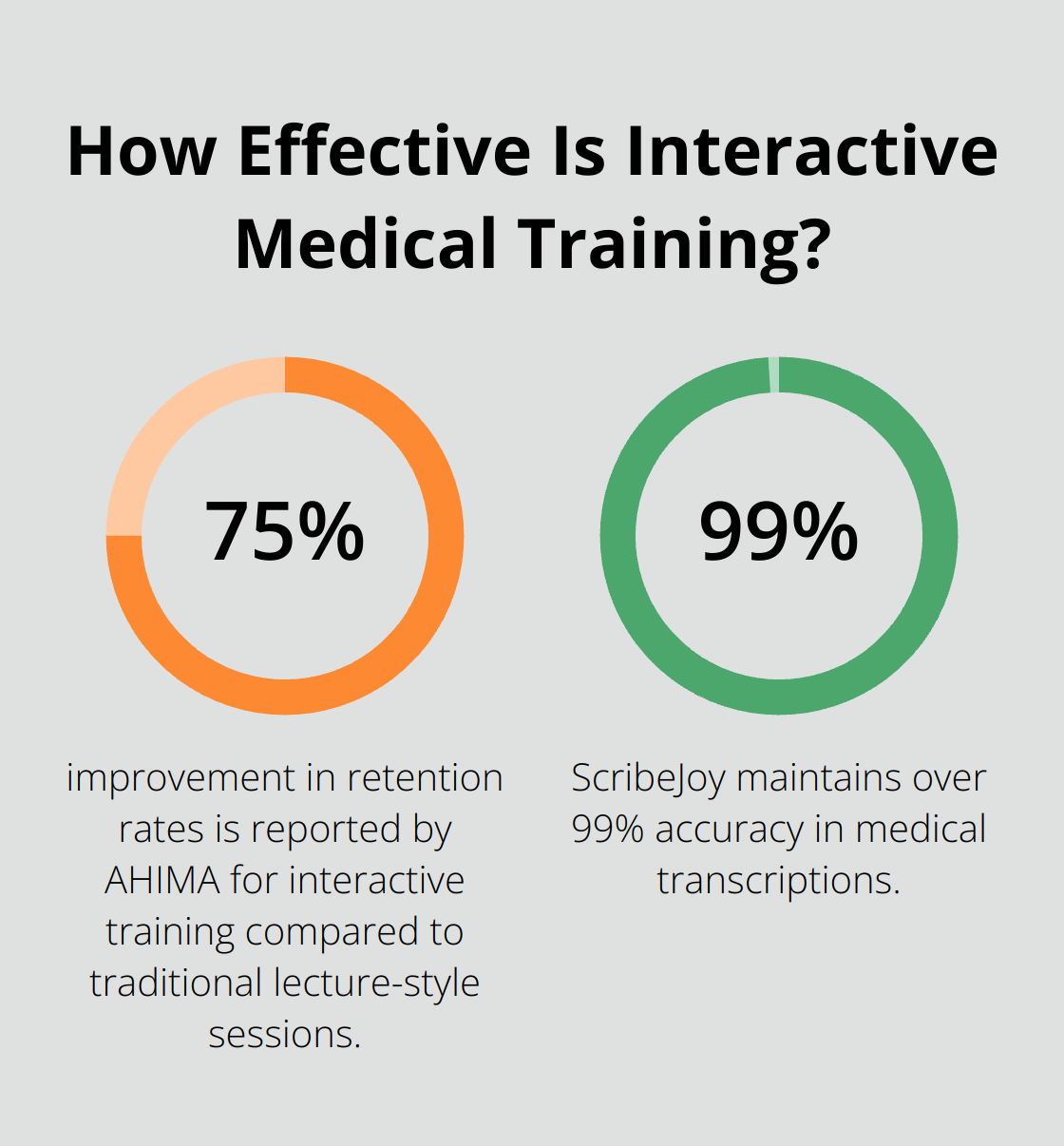
These training sessions should cover:
- Updates to HIPAA regulations
- Real-world examples of HIPAA violations and their consequences
- Practical scenarios specific to medical transcription
Use interactive training methods. The American Health Information Management Association (AHIMA) reports that interactive training can improve retention rates by up to 75% compared to traditional lecture-style sessions.
Develop and Enforce Robust Security Policies
Create comprehensive security policies and enforce them rigorously. Start by documenting clear procedures for handling PHI, including:
- Secure login protocols
- Guidelines for remote work
- Steps for reporting potential breaches
Enforce these policies through regular audits. The HIPAA Journal suggests conducting internal audits at least quarterly. These audits should review access logs, assess policy adherence, and identify potential vulnerabilities.
Conduct Thorough Risk Assessments
Regular risk assessments form a cornerstone of HIPAA compliance. The U.S. Department of Health and Human Services recommends conducting a risk assessment at least annually (or whenever significant changes occur in your organization).
During these assessments:
- Identify all systems and devices that handle PHI
- Evaluate current security measures
- Assess potential threats and vulnerabilities
- Develop action plans to address identified risks
Risk assessments don’t just identify problems-they proactively prevent them.
Leverage HIPAA-Compliant Transcription Tools
The right tools can significantly simplify HIPAA compliance. Look for transcription software that offers:
- End-to-end encryption
- Robust access controls
- Detailed audit trails
ScribeJoy provides all these features while maintaining over 99% accuracy in medical transcriptions. This combination of security and accuracy is vital for HIPAA compliance and efficient healthcare operations.
Monitor and Update Compliance Measures
HIPAA regulations evolve, and so should your compliance measures. Stay informed about changes in HIPAA laws and adjust your practices accordingly. Subscribe to updates from the Department of Health and Human Services (HHS) and relevant industry publications.
Regularly review and update your policies and procedures (at least annually). This practice ensures your compliance measures remain effective and up-to-date. It also demonstrates a commitment to ongoing HIPAA compliance, which can be beneficial in case of an audit.
Final Thoughts
HIPAA confidentiality regulations that apply to medical transcription form the foundation of patient privacy protection in healthcare. These rules protect sensitive information, uphold trust, and ensure the integrity of medical records. Compliance with HIPAA requires a comprehensive approach, including secure data handling, proper disposal, strict access controls, and encrypted transmission.
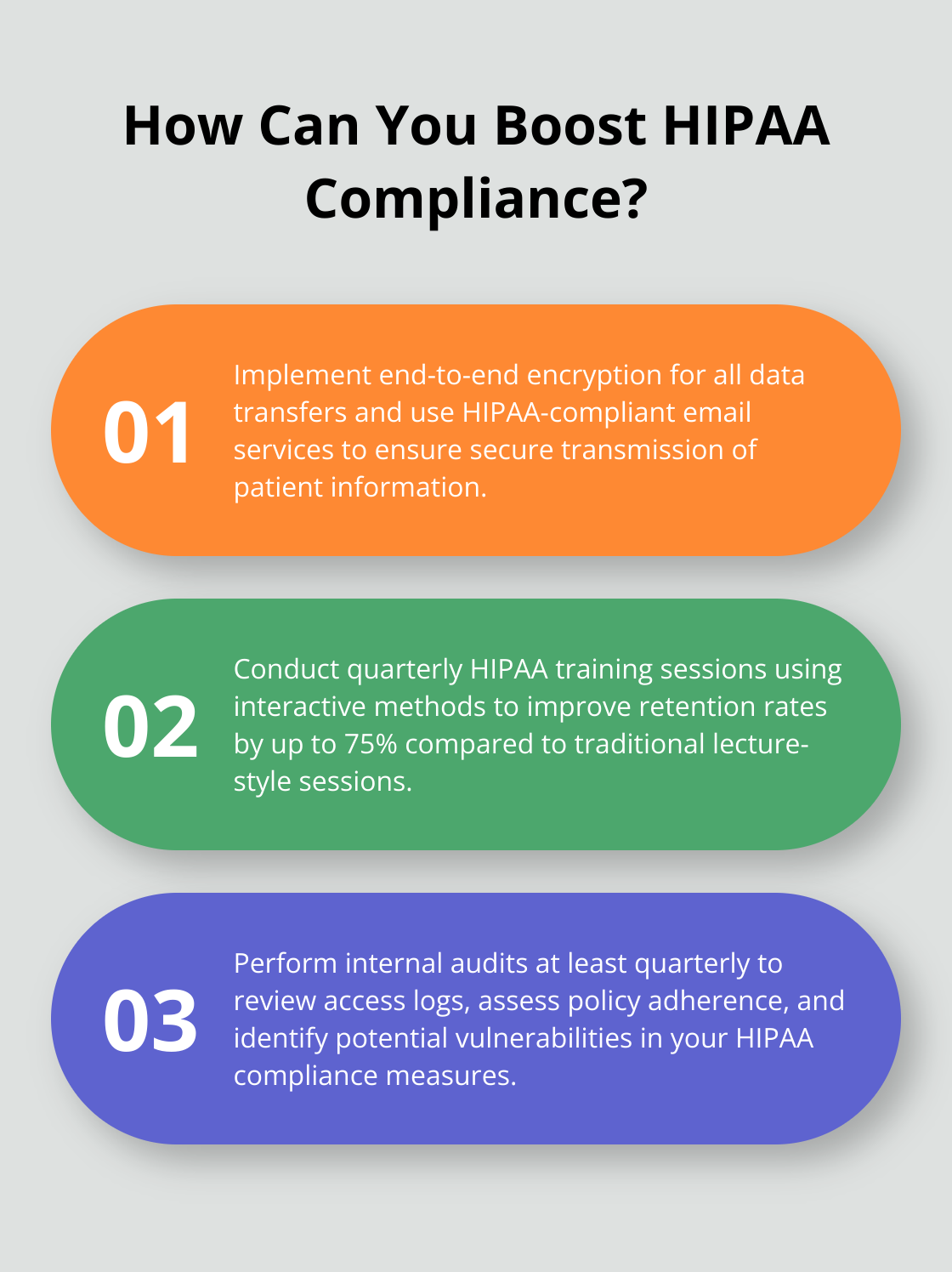
Ongoing compliance efforts extend beyond legal requirements and represent a core aspect of quality healthcare delivery. Regular training, strong security policies, and thorough risk assessments contribute to a robust HIPAA compliance strategy. Medical transcriptionists play a vital role in maintaining patient confidentiality and supporting the broader healthcare ecosystem through their vigilance and adaptation to evolving regulations.
HIPAA compliance in medical transcription shields healthcare providers from penalties, maintains patient trust, and enhances care quality. ScribeJoy’s HIPAA-compliant transcription software combines AI technology with human verification to produce highly accurate medical documentation. Healthcare providers can streamline their transcription processes while adhering to the highest standards of patient privacy and data security.
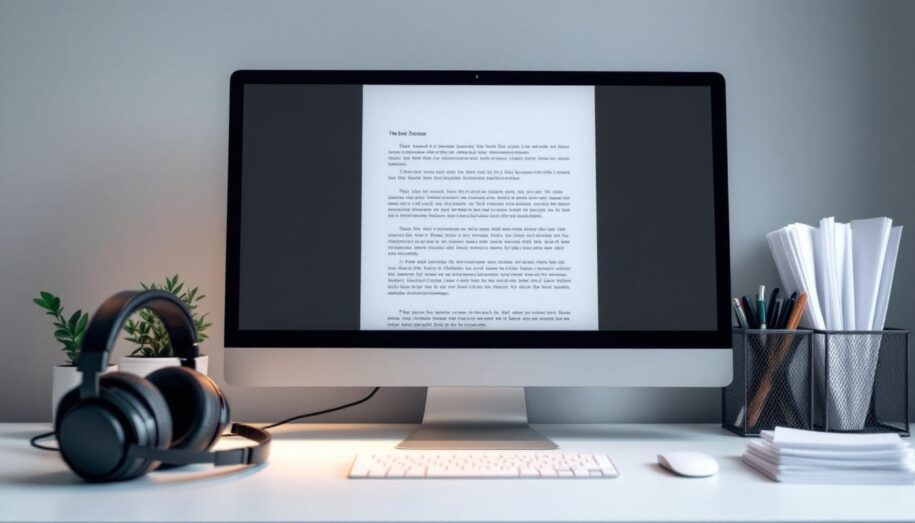
Leave a Reply
You must be logged in to post a comment.